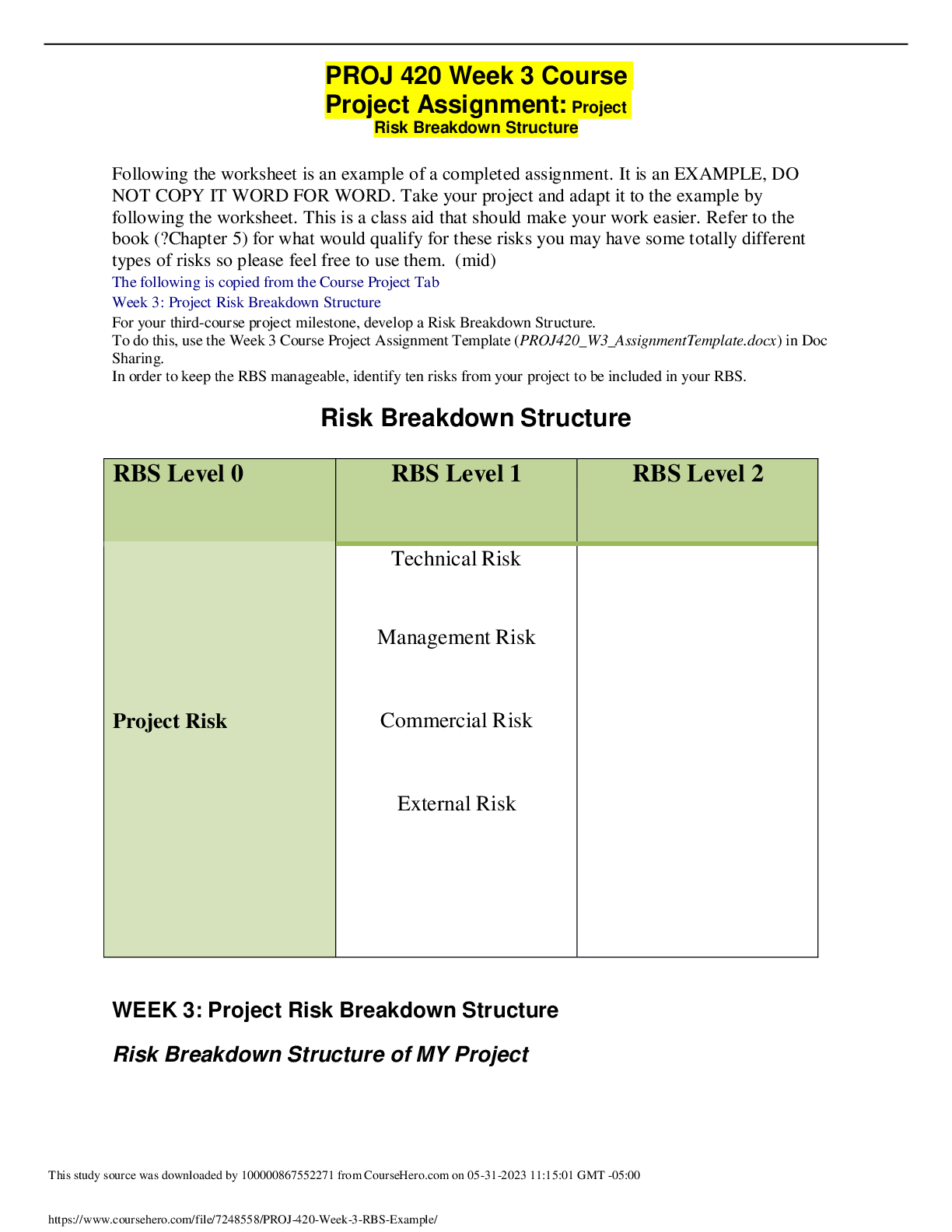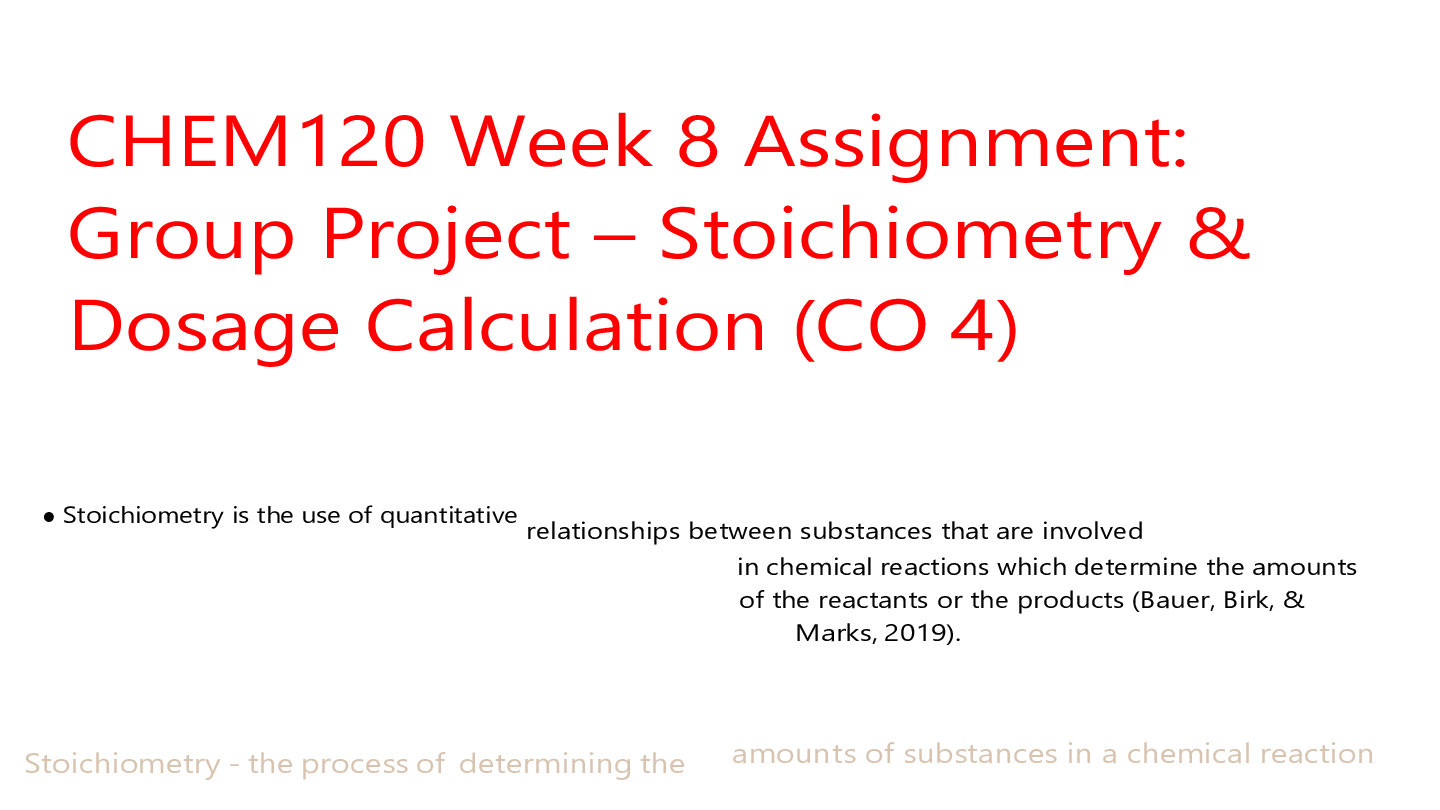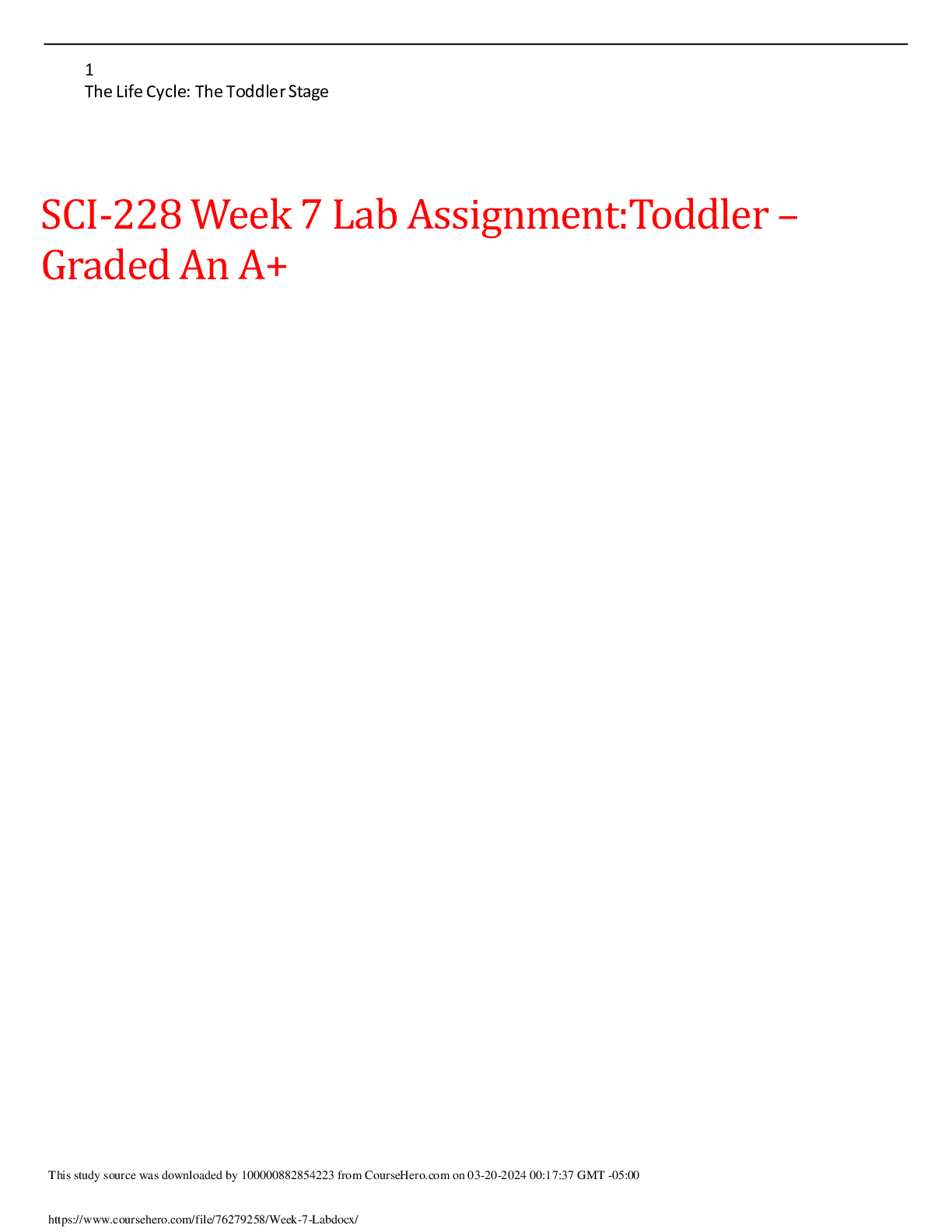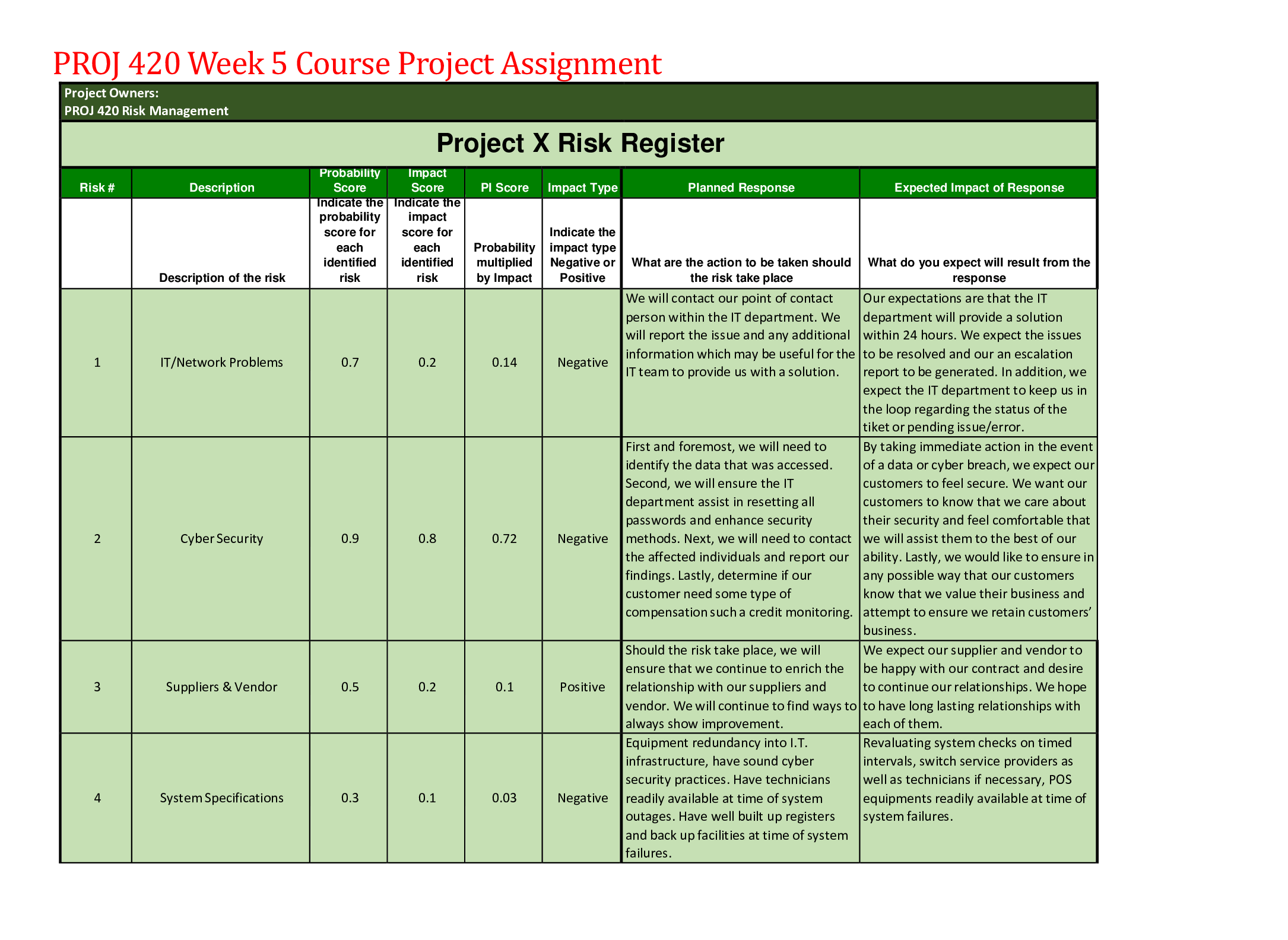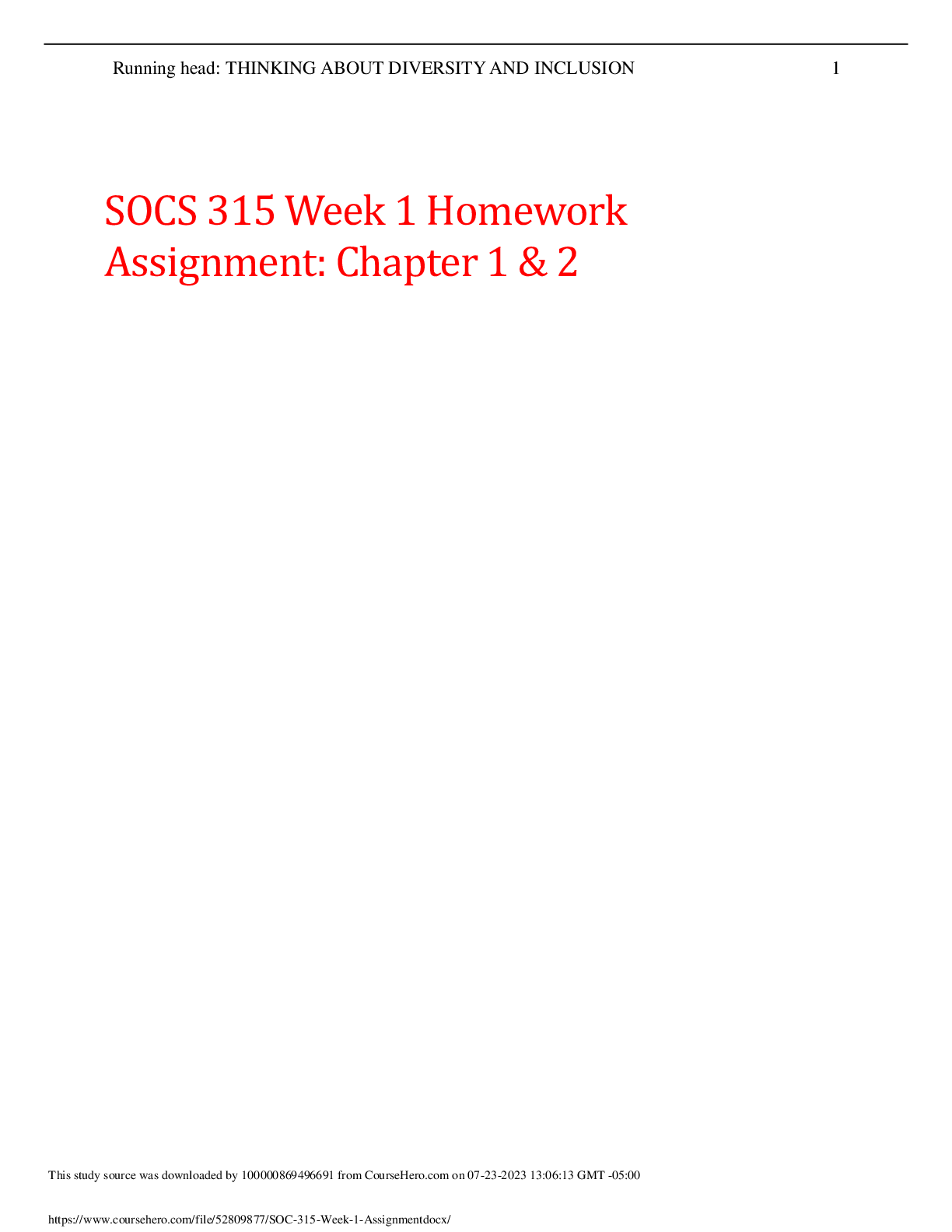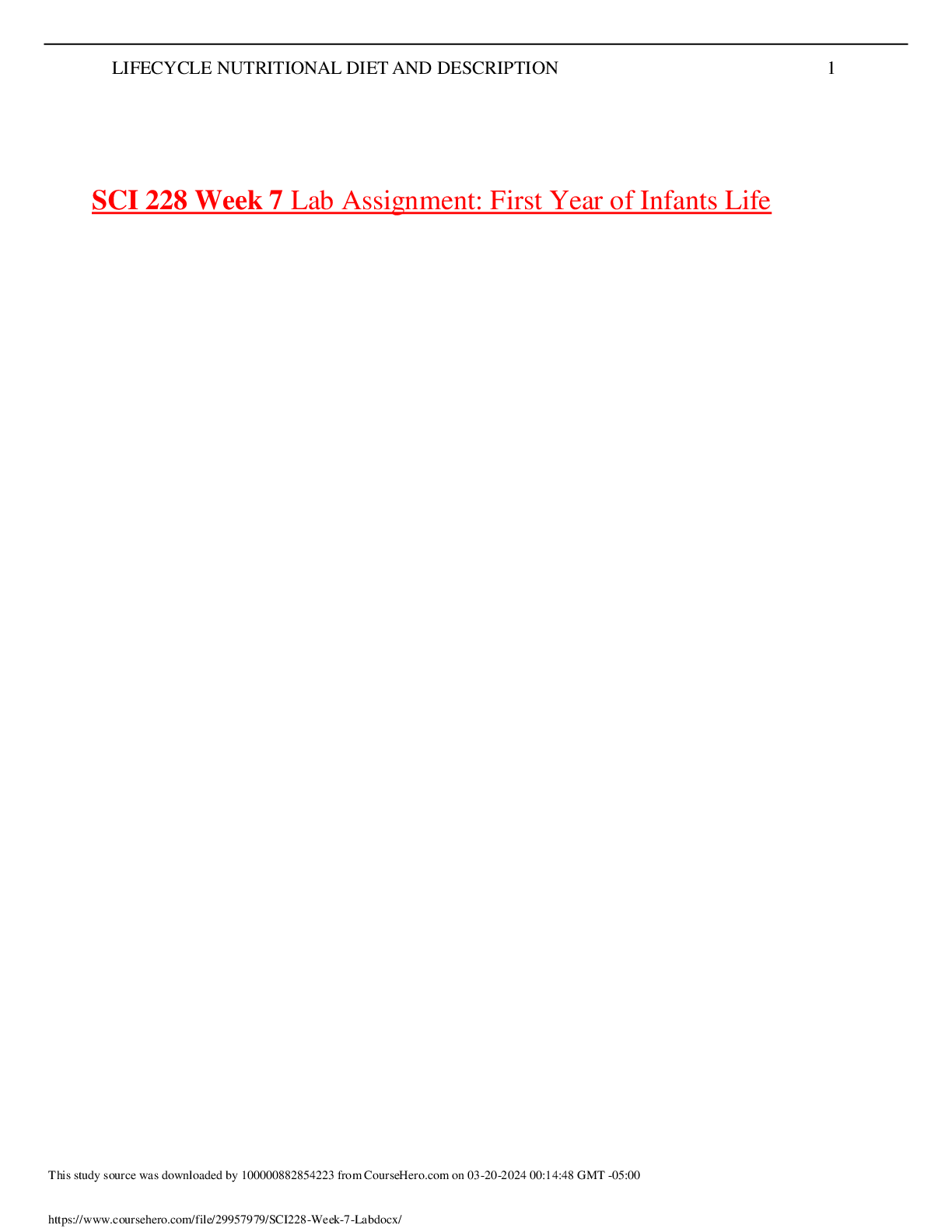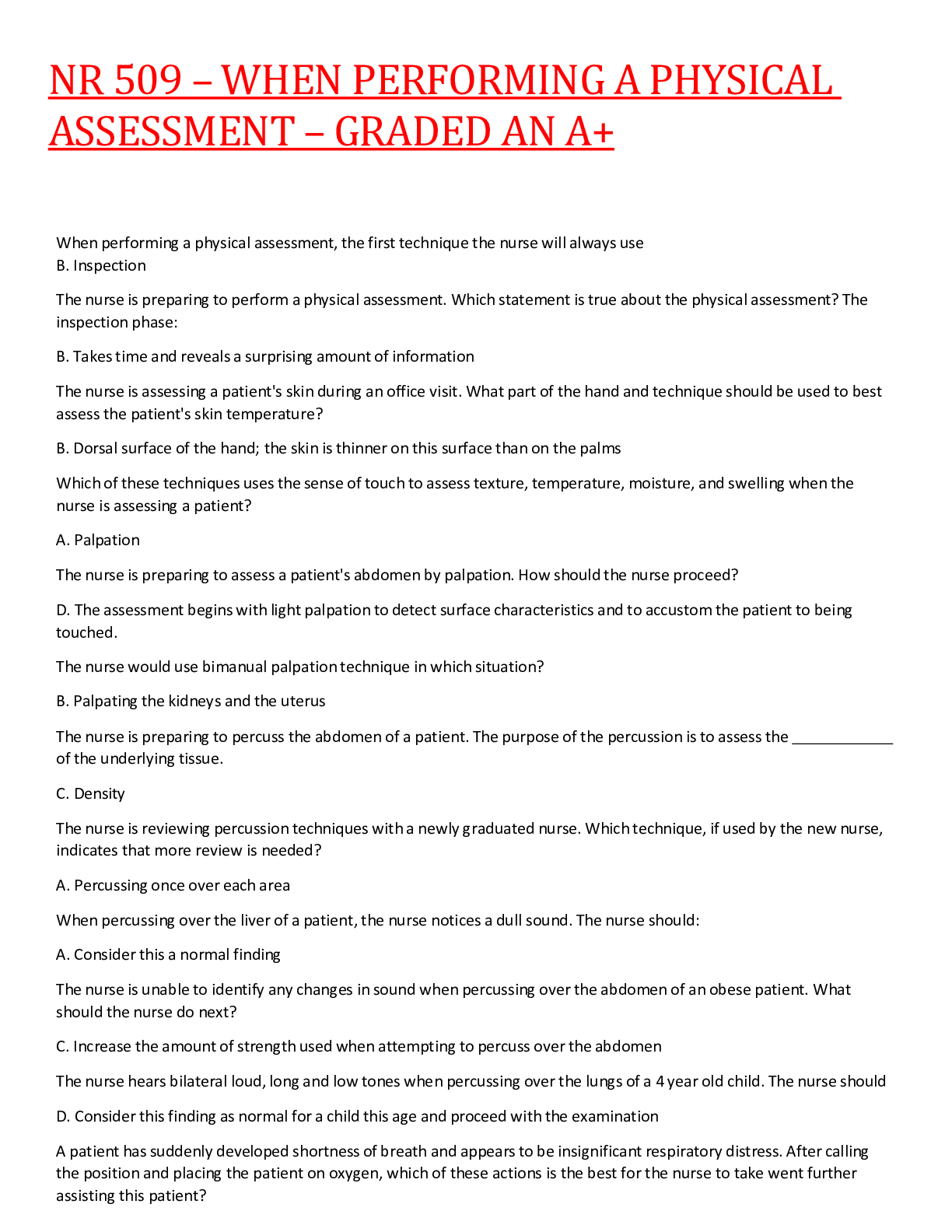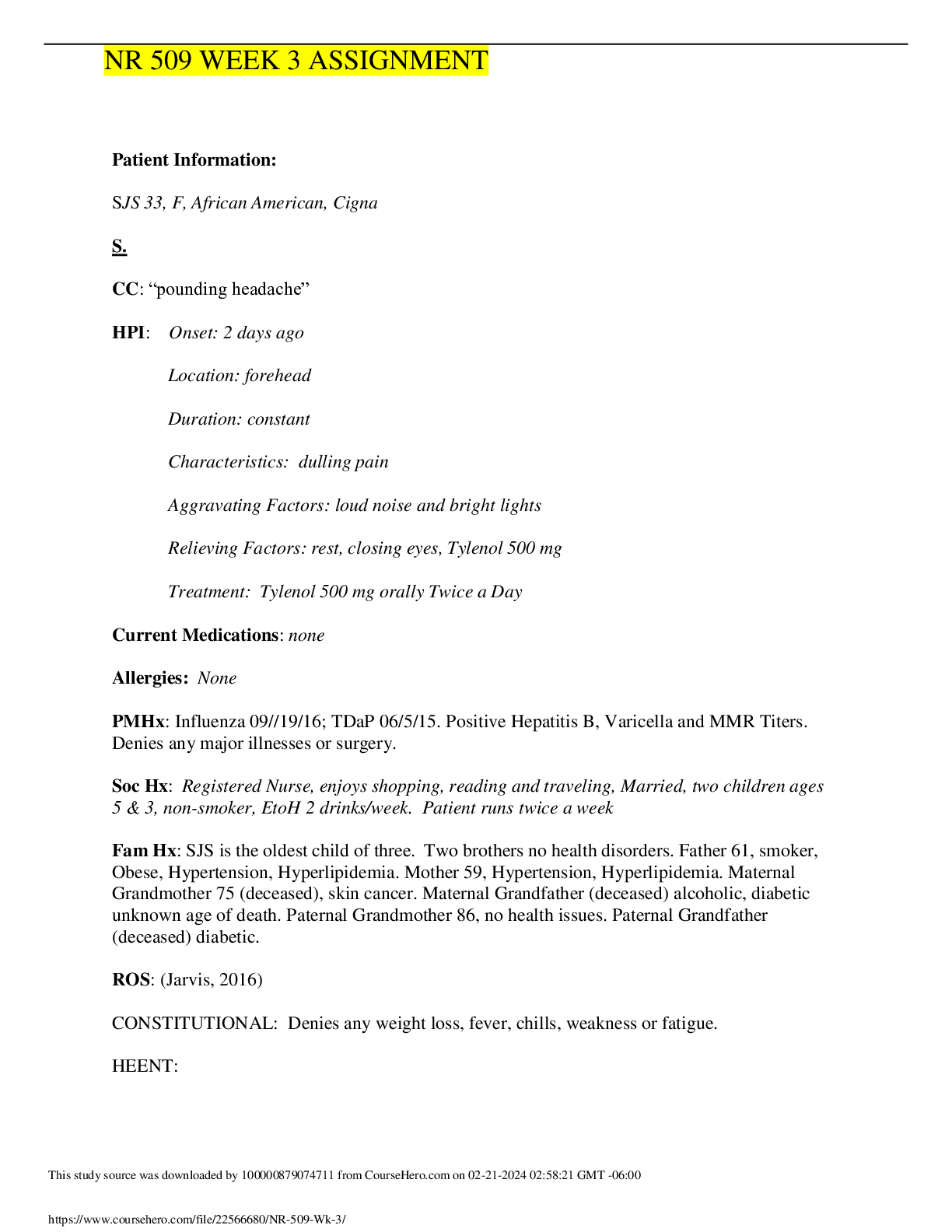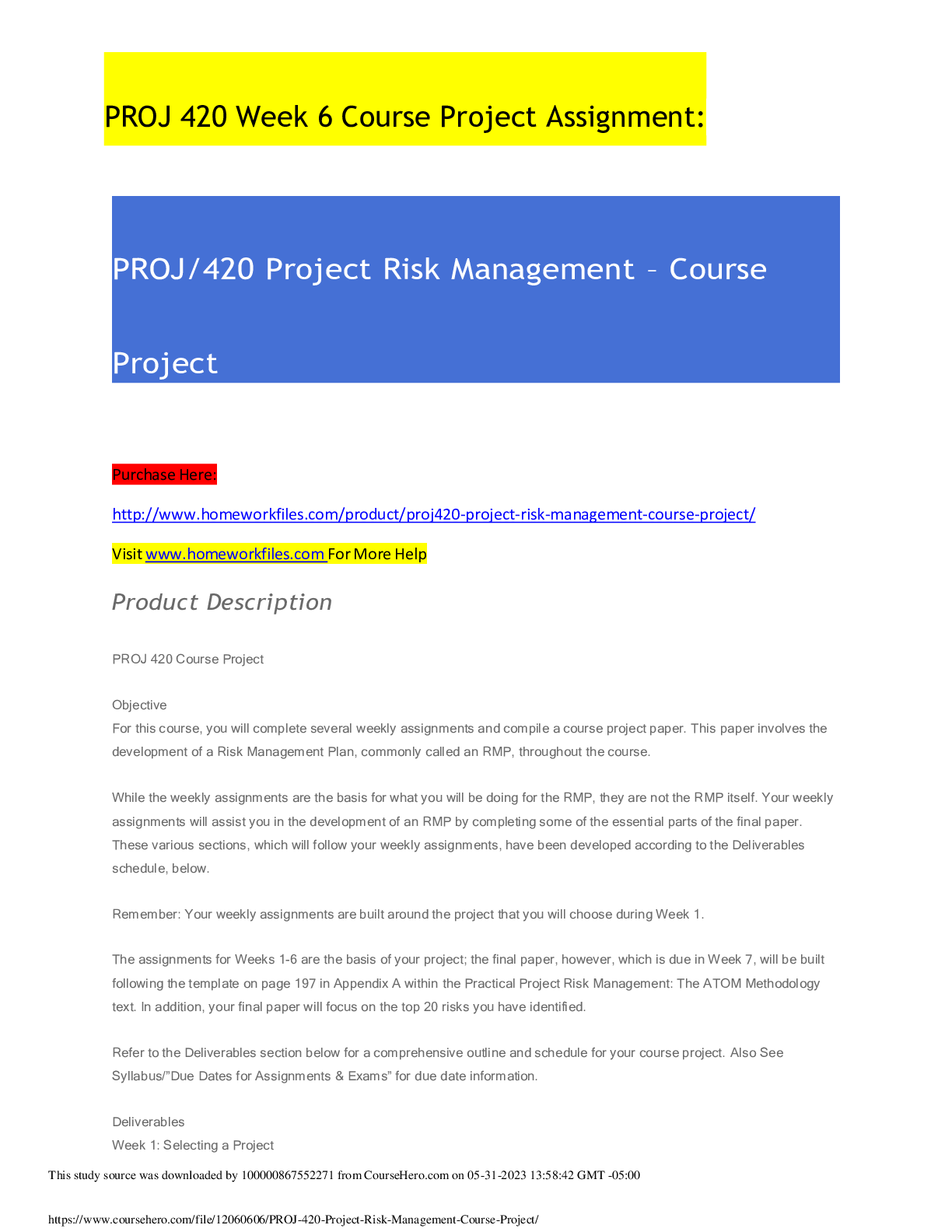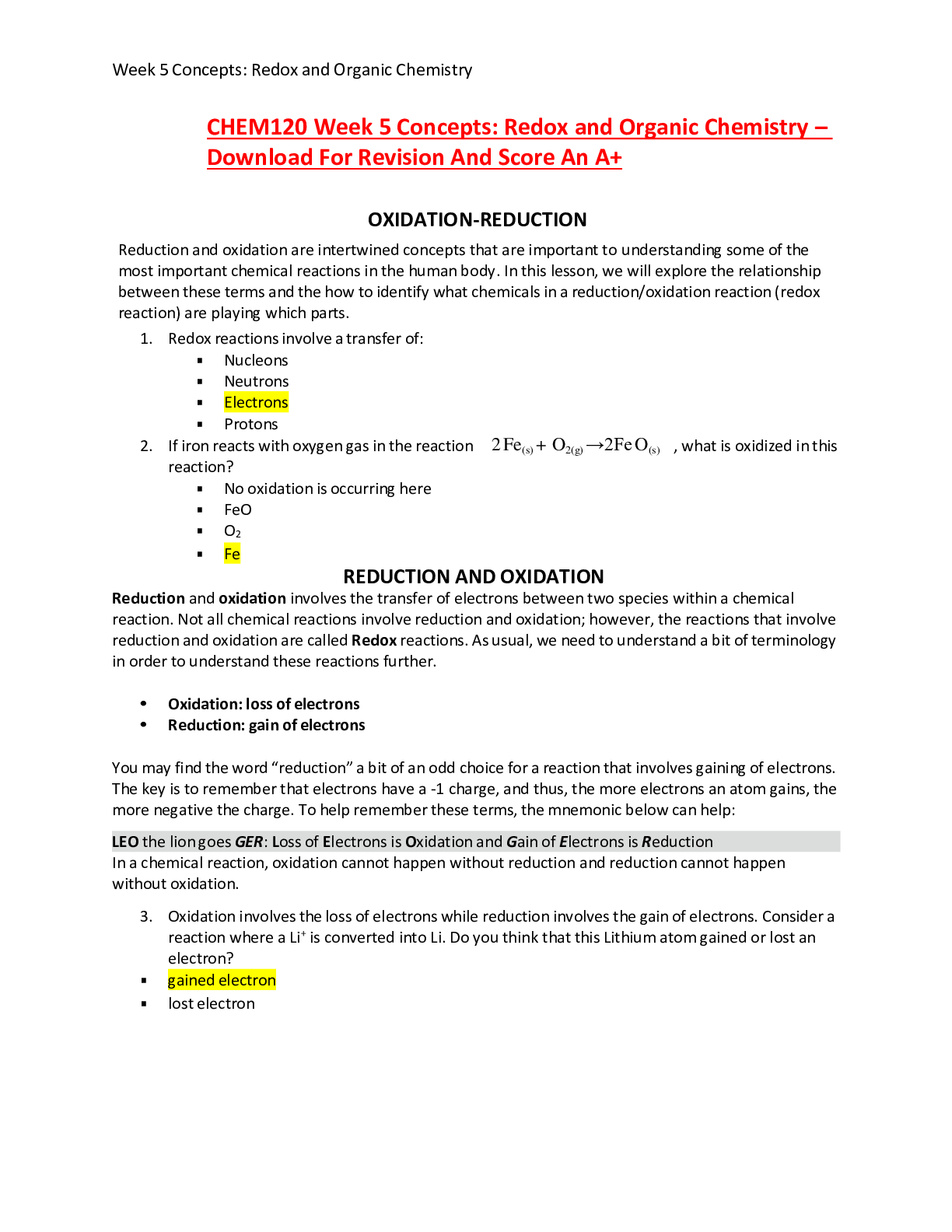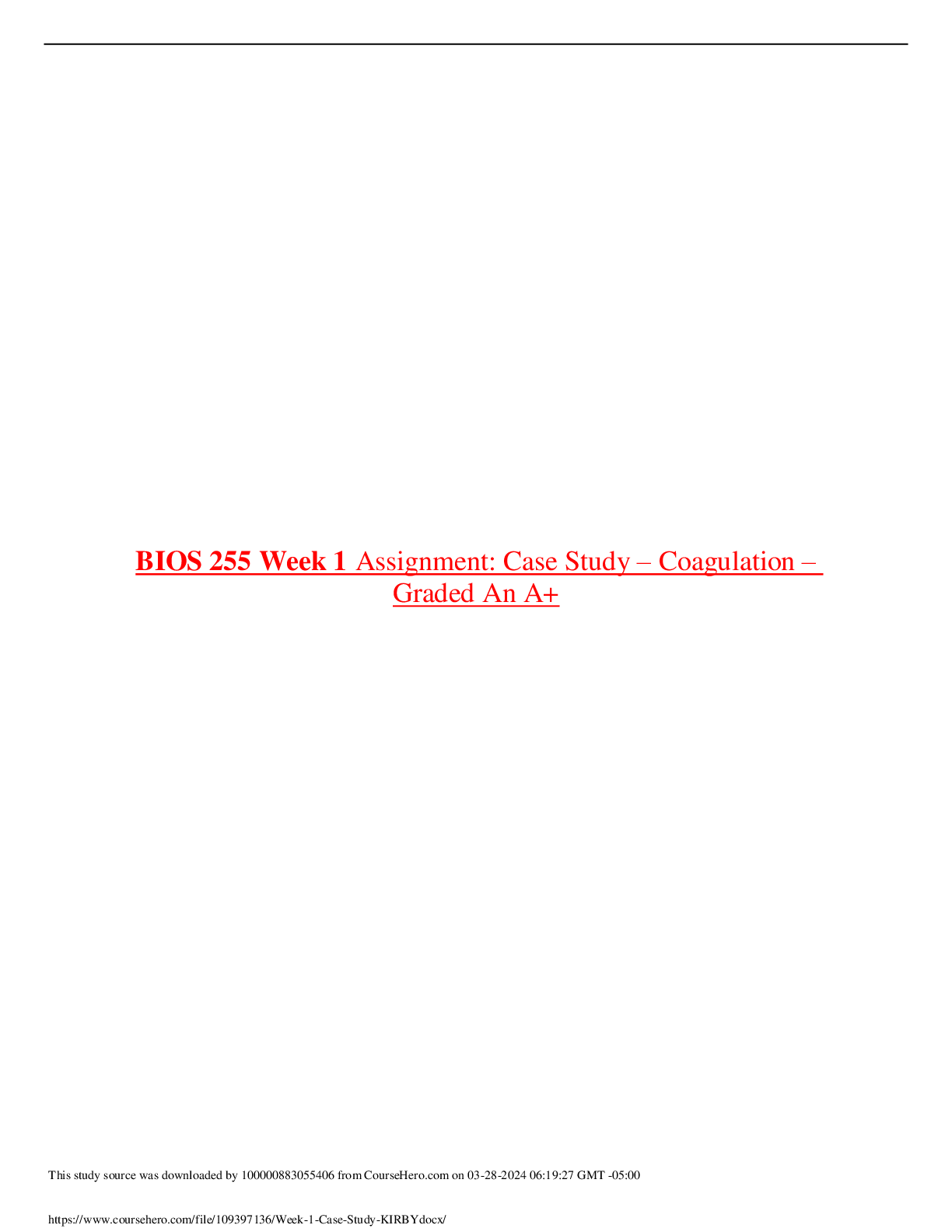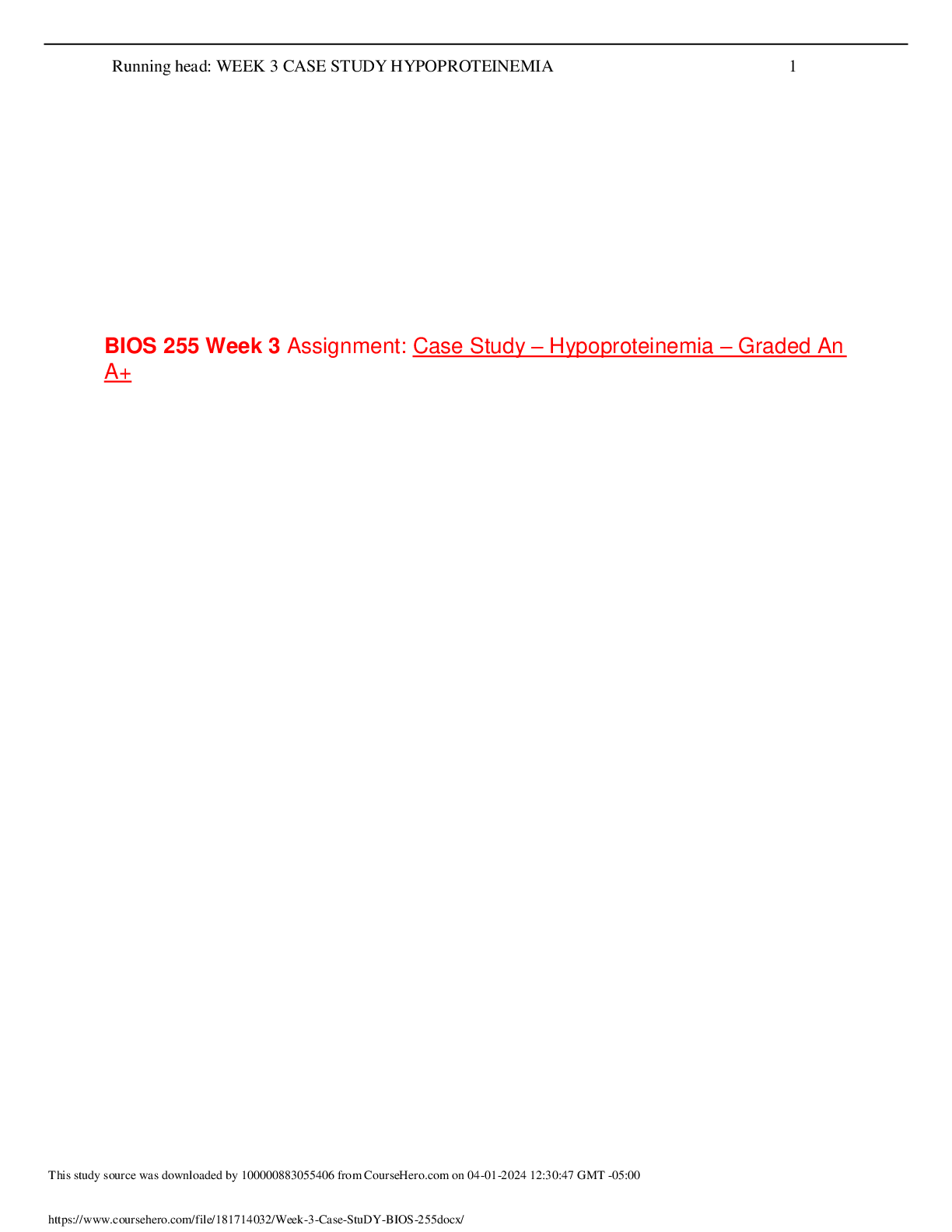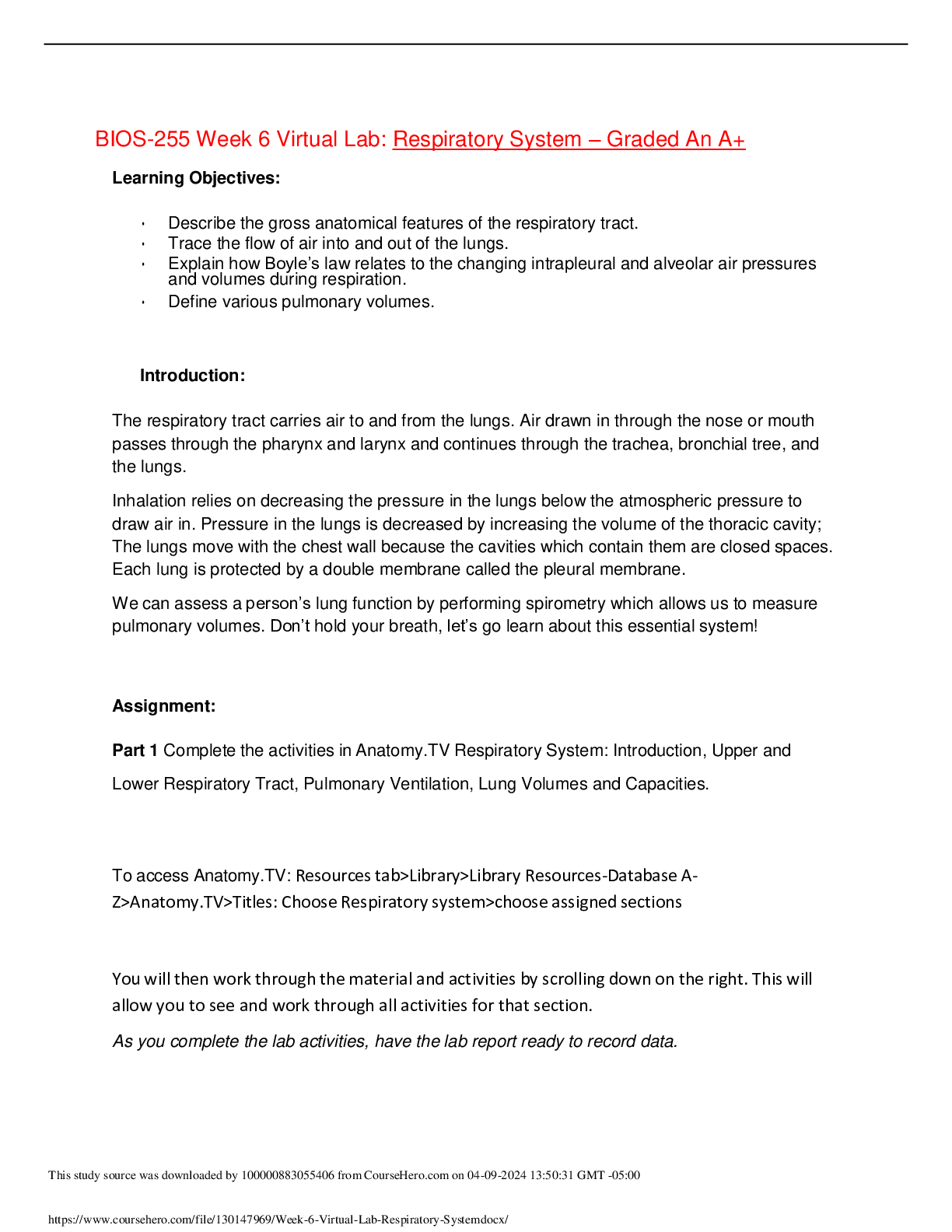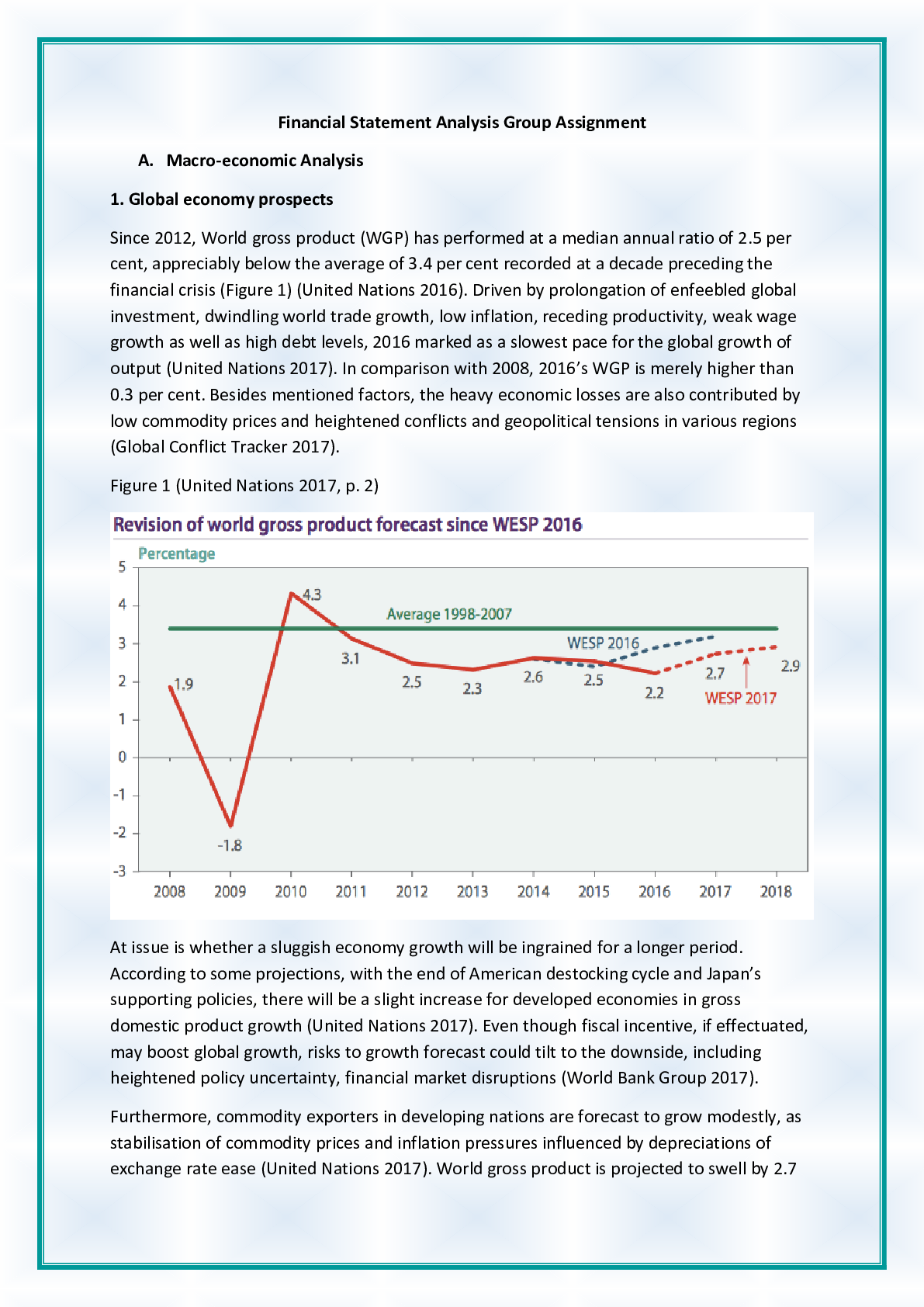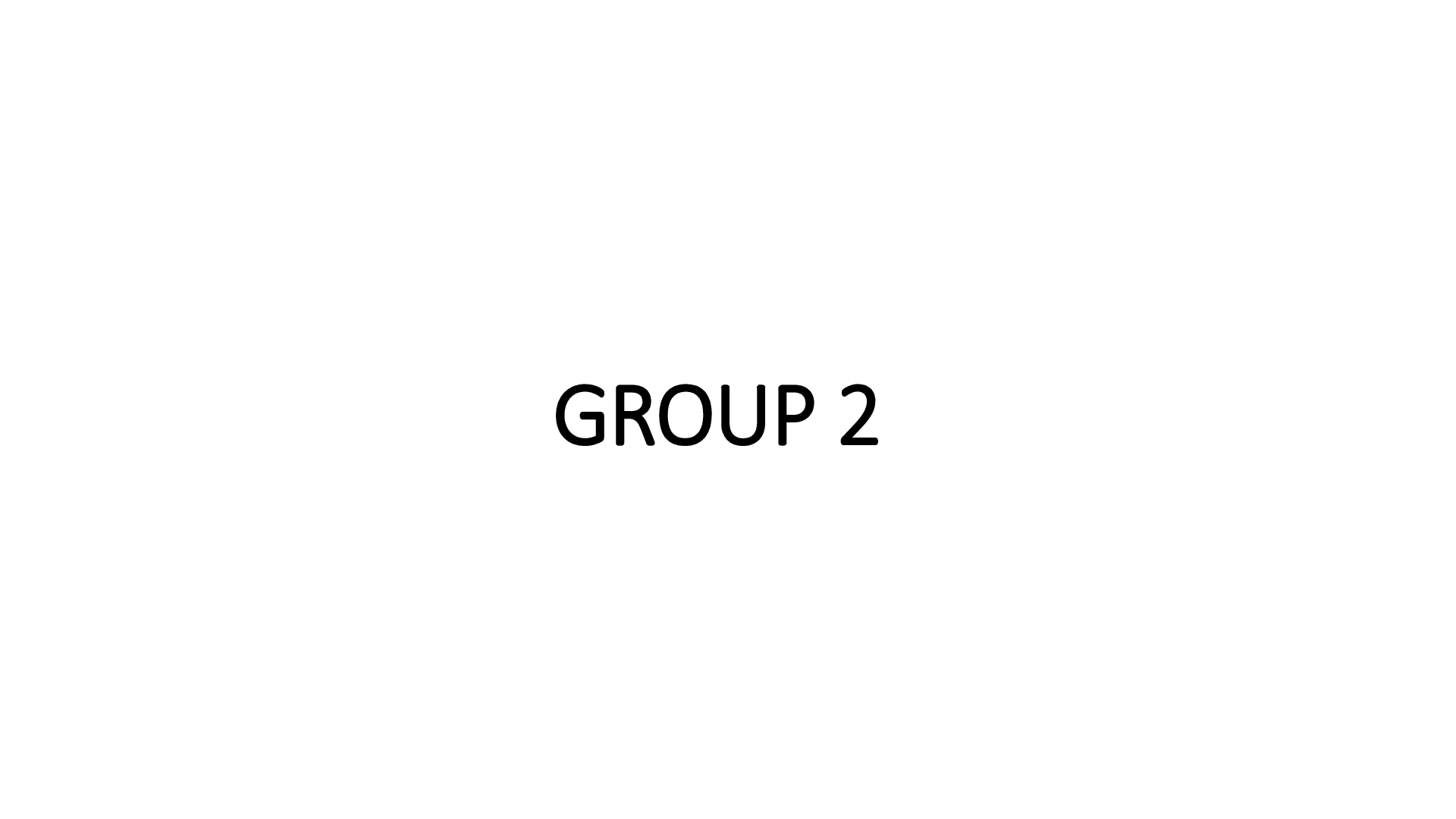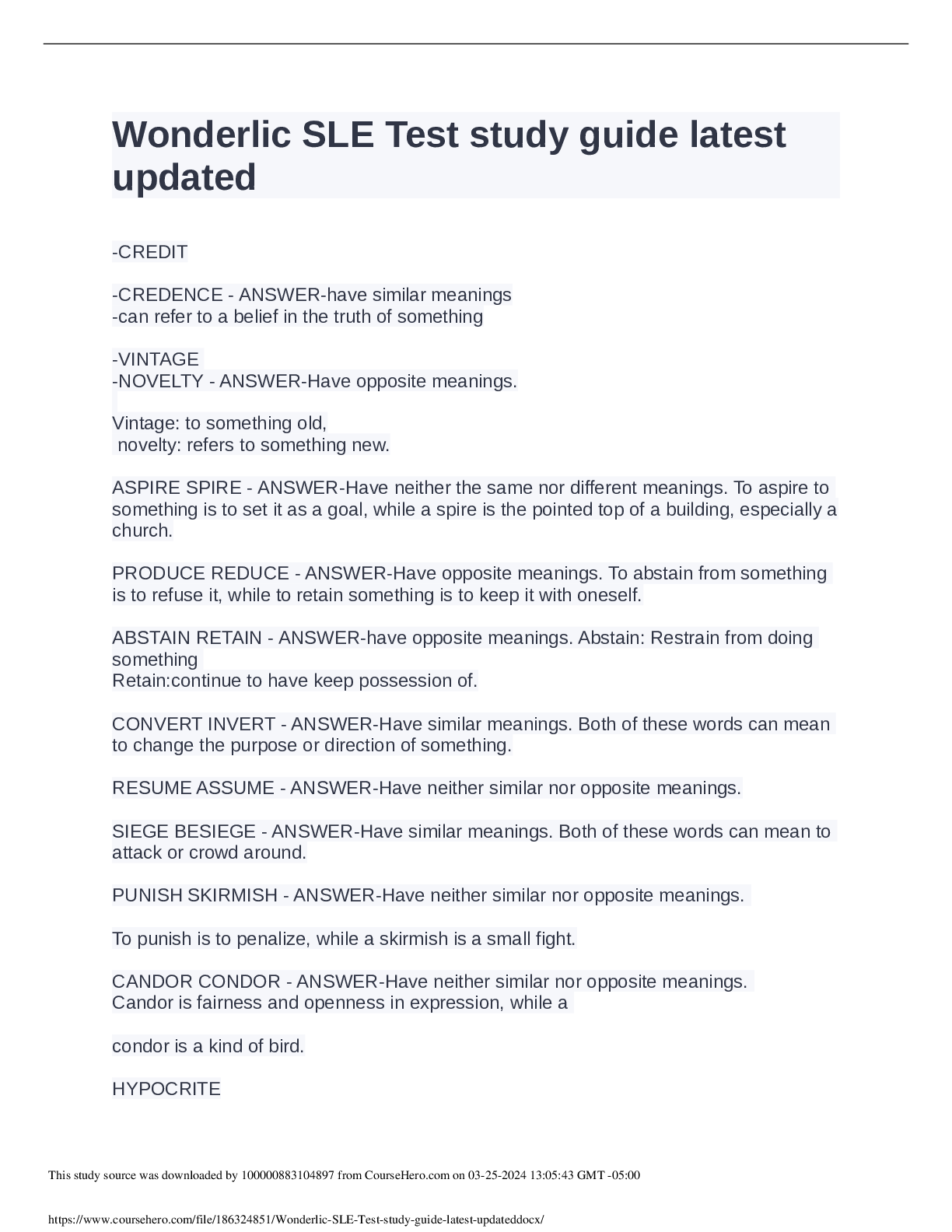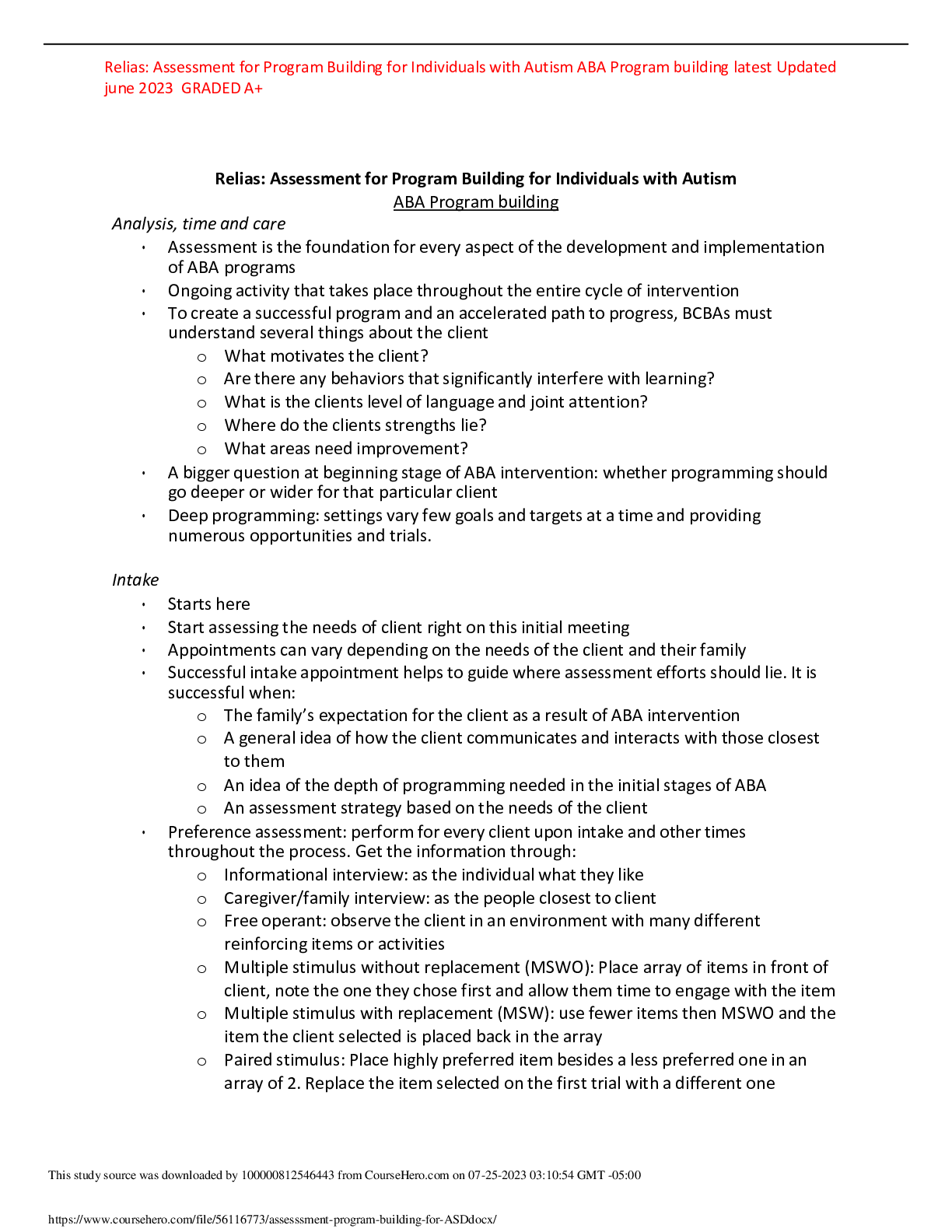*NURSING > ASSIGNMENT > BIOS255 Week 7 Respiratory System-Physiology – Graded An A+ (All)
BIOS255 Week 7 Respiratory System-Physiology – Graded An A+
Document Content and Description Below
BIOS255 Week 7 Respiratory System-Physiology – Graded An A+ Learning objectives: 1. State the functions of respiration. 2. Identify the components of the respiratory membrane. 3. Define the la... ws that govern the movement of gas through a tissue. 4. Distinguish between external and internal respiration. 5. Explain the factors that influence the binding of oxygen to hemoglobin. 6. Compare the transport of carbon dioxide by the blood with that of oxygen. 7. Explain the control of respiration and the factors that influence the rate of respiration. Introduction: Active cells require a constant supply of oxygen in order to produce energy to carry out cellular processes and release carbon dioxide as a waste product. The body must replenish this supply of oxygen and remove the build-up of carbon dioxide, as it is toxic to cells in high concentrations. The respiratory membrane provides a large surface area and a thin, permeable, and moist surface where the gaseous exchange of oxygen and carbon dioxide can take place. At this site, carbon dioxide is released from the blood into the alveoli and out of the body with each exhalation. Oxygen is obtained from air in the alveoli with each inhalation and diffuses into the blood, where it is carried to cells of the body. The respiratory membrane is composed of the cells that form the alveolar wall and those that form the capillary wall. It forms a barrier between the air in the lungs and the blood in the capillaries. The membrane is very thin, measuring only 0.5 μm across, to facilitate the rapid diffusion of oxygen and carbon dioxide across it. Our respiratory rate, or the number of breaths we take per minute, and the depth at which we respire with each breath is controlled by the respiratory center, located in the brainstem. It ensures that our respiratory effort matches the metabolic demands of our body. Assignment: Part 1: Complete the activities in Anatomy. TV for Respiratory System: Respiratory Membrane and Gas Exchange, Control of Respiration To access Anatomy.TV: Resources tab>Library>Library Resources-Database A- Z>Anatomy.TV>Titles(default tab): Choose assigned system>choose assigned sections You will then work through the material and activities by scrolling down on the right. This will allow you to see and work through all activities for that section. Part 2: Complete the lab report. Respiratory Physiology Lab Report 1. Purpose: Please state the purpose of the lab. The purpose of this lab is to get a better understanding of the respiratory system. 2. Procedure: Briefly discuss the procedure for this lab. The procedure for this lab is to read the instructions, miniature lecture typed above, complete all activities and complete lab report. 3. Data and Details: a. Complete the table regarding partial pressures of oxygen (PO2) and carbon dioxide (PCO2) (mm Hg): Partial pressure in atmospheric air Partial pressure in alveoli Partial pressure in pulmonary capillaries Partial Pressure in systemic capillaries Partial Pressure in tissues Oxygen 160mmHg 105mmHg 40mmHg 100mmHg 40mmHg Carbon dioxide X (not provided) 40mmHg 45mmHg 40mmHg 45mmHg b. Define external and internal respiration. Internal respiration- when oxygen diffuse from the alveoli into the pulmonary capillaries. External respiration- when oxygen diffuse from the systematic capillaries into the tissues. In the external and internal respirations, CO2 moves in the opposite direction. c. Identify the cell of the respiratory membrane that secretes surfactant. The respiratory membrane that secretes surfactant is Type 2 alveolar cells. d. State Henry’s law regarding gases. Henry’s law states the amount of gas that is dissolved in a liquid is directly proportional to the partial pressure of that gas over the liquid when the temperature remains constant. 4. Questions: a. Given that gases tend to flow from regions of higher pressure to lower pressure, down a pressure gradient, analyze the PO2 and PCO2 table above to predict the direction of flow between systemic capillaries and tissues both for oxygen and for carbon dioxide. Oxygen moves from the systemic capillaries into tissues. Carbon dioxide moves from the tissue in the systemic capillaries (high to low pressure). b. How does Henry’s law explain why there is more carbon dioxide than oxygen present in blood plasma? How is most of the carbon dioxide transported (in what form)? How is most oxygen transported? O2 has a much lower solubility in the plasma of blood than CO2. More CO2 molecules can diffuse across the small pressure gradient of the capillary and alveoli. CO2 is transported in the form of gas. O2 is transported through RBCs. c. When the affinity of hemoglobin for oxygen is decreased, the hemoglobin will more readily release the oxygen to tissues in need. Identify 3 things that decrease hemoglobin’s affinity for oxygen. • Decrease in tissue PH • Increase in temperature • Partial pressure of carbon dioxide d. If you were to voluntarily hold your breath, eventually the respiratory center would overrule you, forcing you to breathe, due to increased concentrations of what 2 substances? Pons and medulla olbongata 5. Discussion: a. How does the respiratory system complement the circulatory system? The respiratory and the circulatory systems works together to move gases into and out of the blood. b. Briefly mention any difficulties with the lab and/or information you wish was present in the lab. The only difficulty I have with this lab is that there was no virtual lab or physical lab to properly complete this assignment to the best of my ability. 6. Reflection: Reflect on at least 2 key concepts you have learned from this lab. As in lecture, one of the key concepts I have learned from this lab is partial pressure is similar but different in atmospheric air, alveoli, pulmonary capillaries, systemic capillaries, and tissues. At the end of this assignment, I learned that I would have to continue to study the differences so that I can have a better understand and memorize it. Another key concept I have learned in this lab is how the respiratory and circulatory system works together to help maintain hemostasis. They work closely together to ensure that organs and tissues receives enough oxygen for cellular functions. Grading Rubric for Lab Report Activity Deliverable Point s Part 1 Complete lab activities/simulation 10 Part 2 Complete lab report and answer questions • Purpose (2 points) • Procedure (2 points) • Data and Details (5 points) • Questions (4 points) • Discussion (2 points) • Reflection (5 points) 20 Total Complete all lab activities 30 [Show More]
Last updated: 3 weeks ago
Preview 1 out of 6 pages
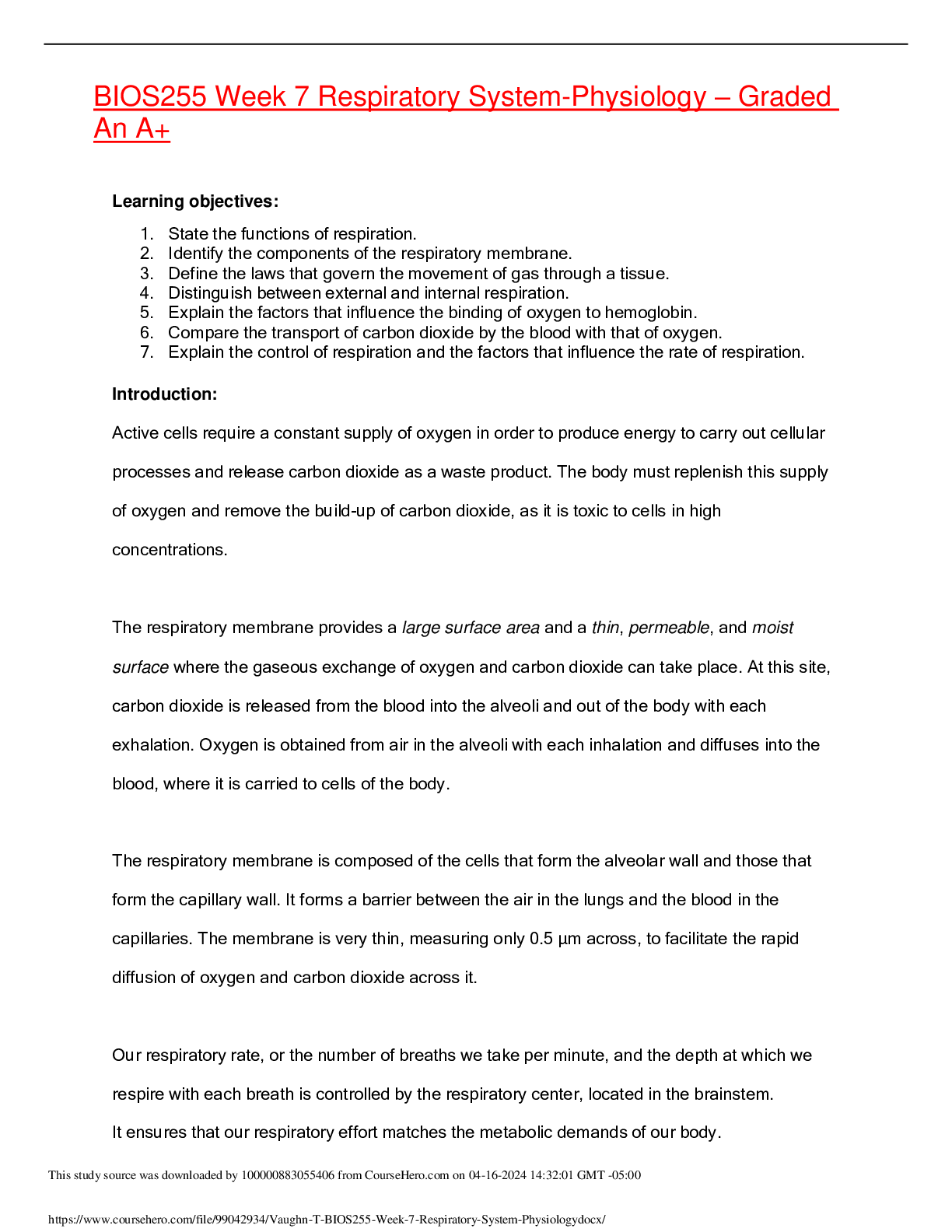
Reviews( 0 )
Document information
Connected school, study & course
About the document
Uploaded On
Apr 18, 2024
Number of pages
6
Written in
Additional information
This document has been written for:
Uploaded
Apr 18, 2024
Downloads
0
Views
8

